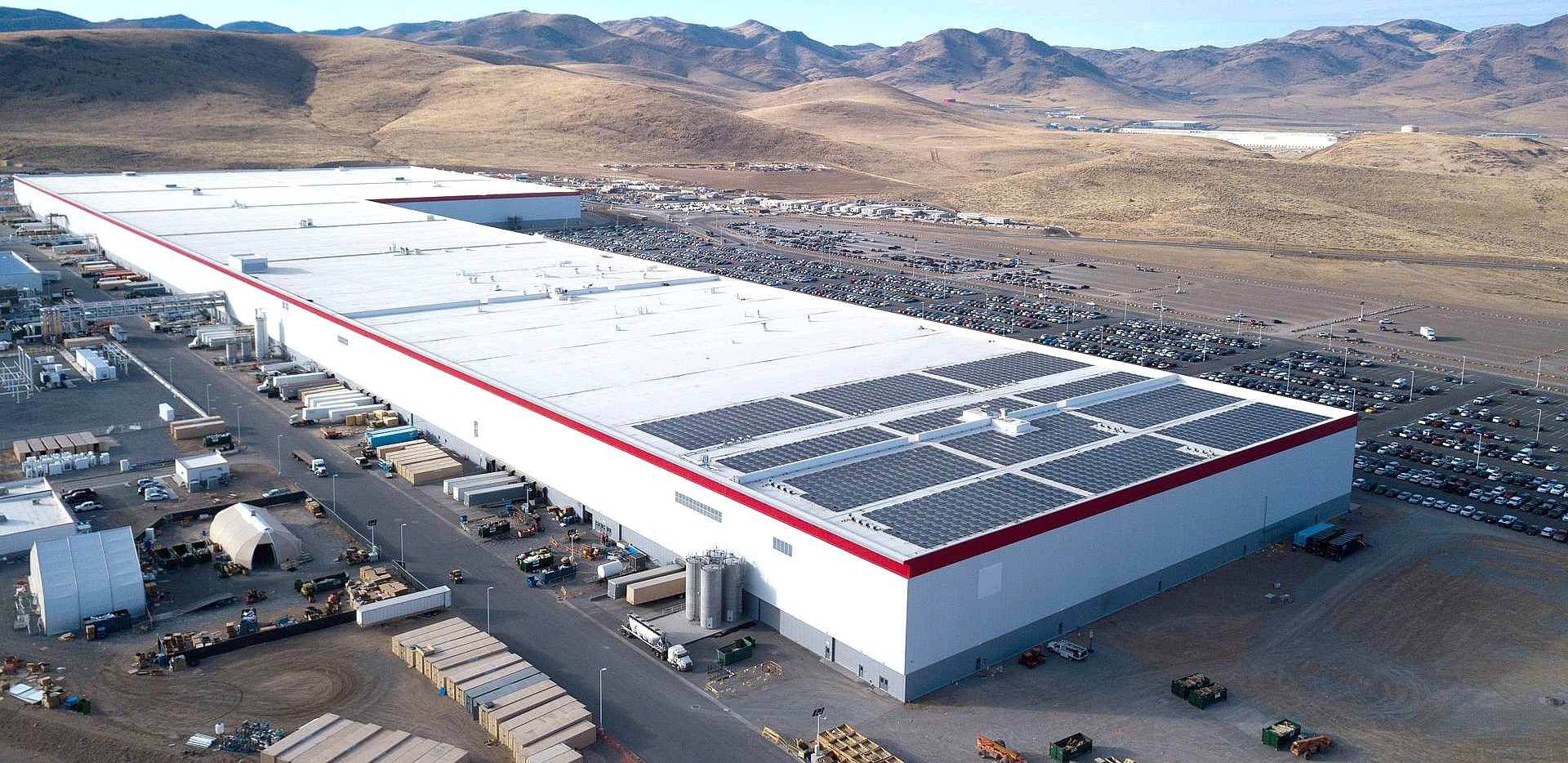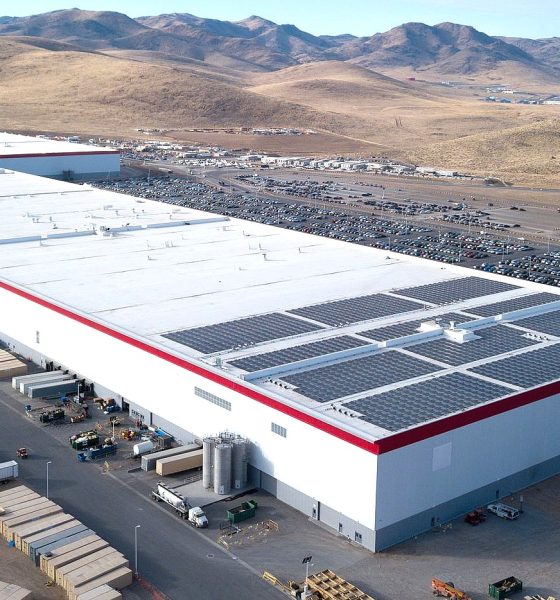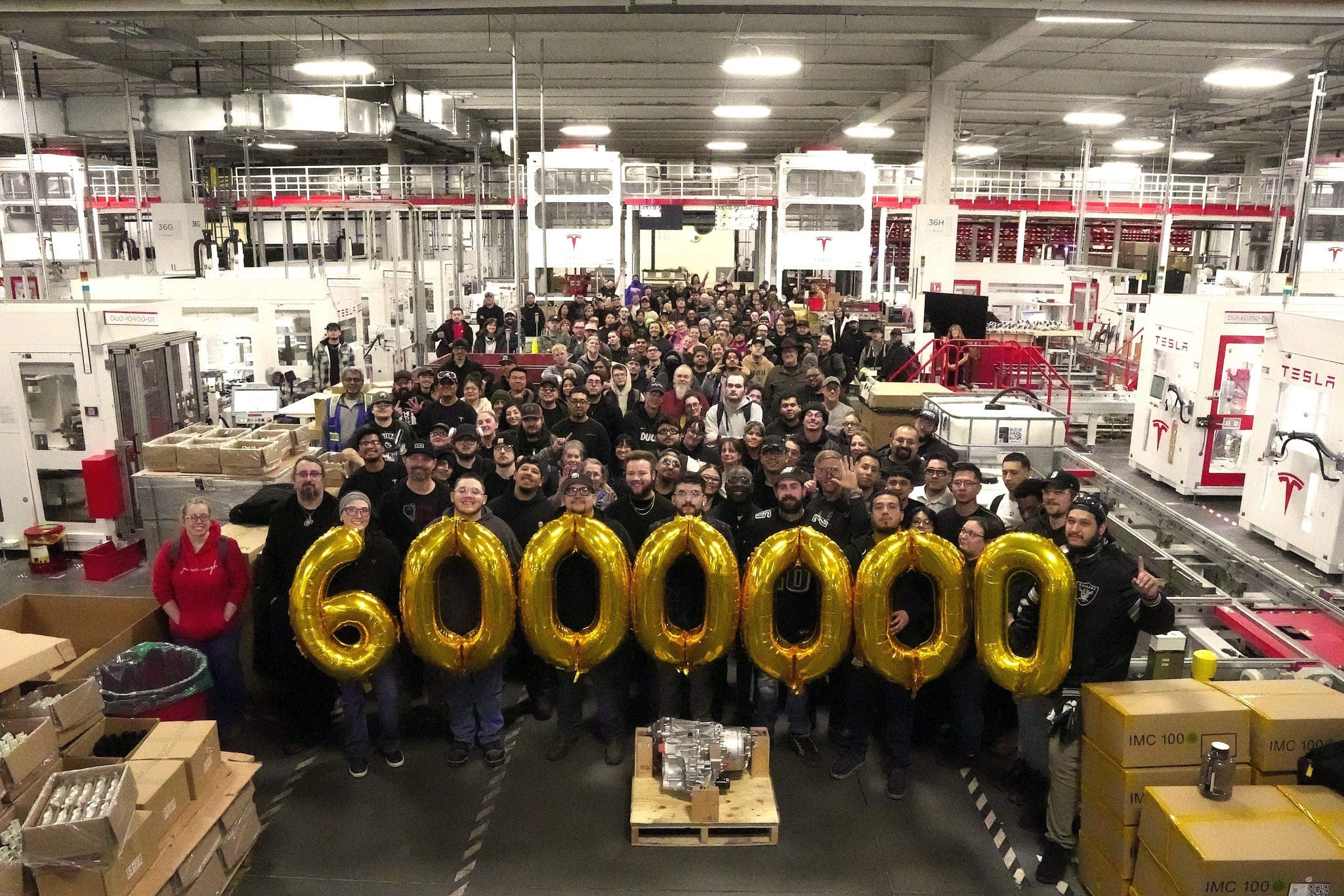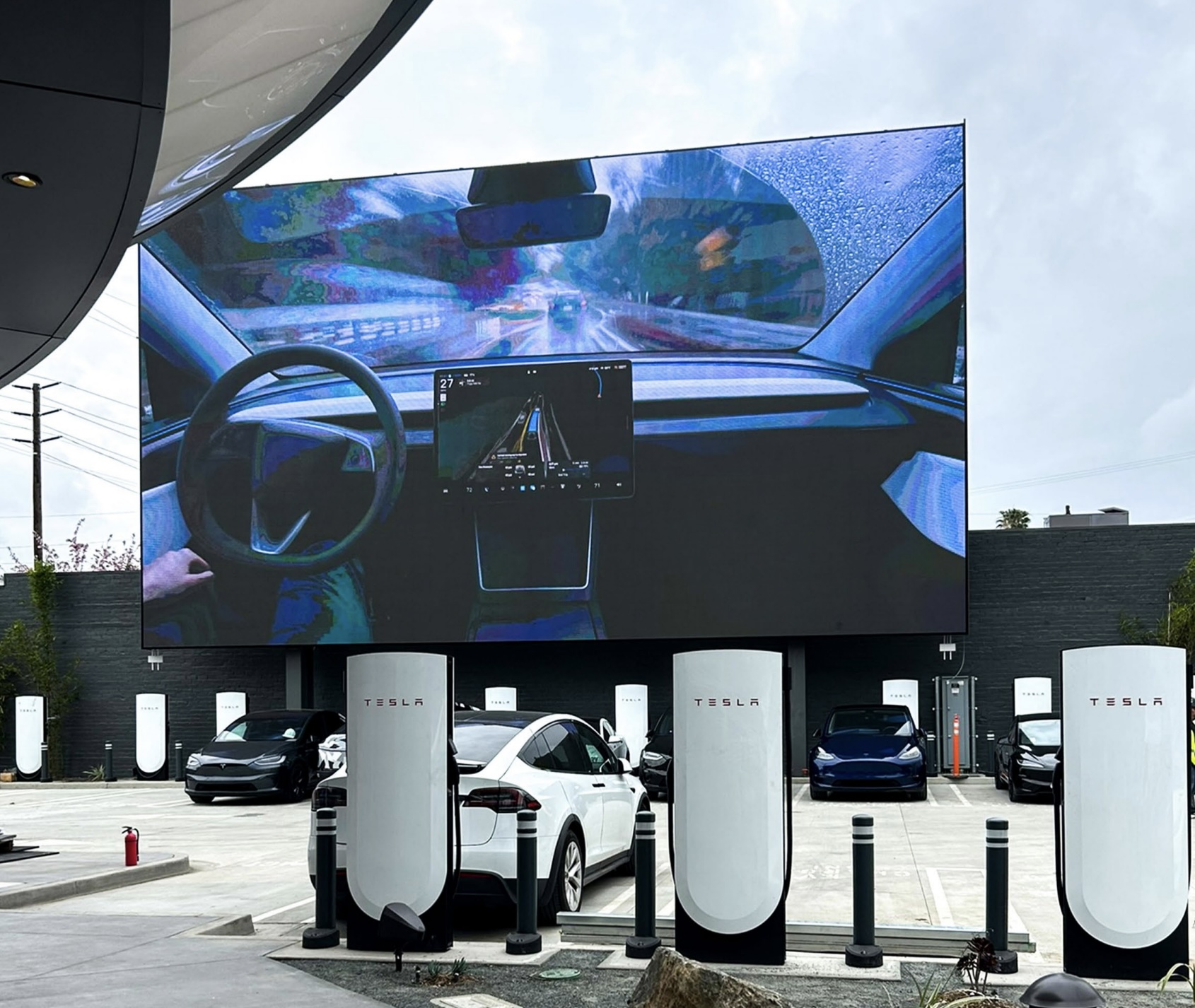

News
Tesla employee foregoes $1M payment, works with FBI to thwart cybersecurity attack
Sometimes, the events that transpire inside a company could be just as exciting and nail-biting as the most popular thrillers in fiction. In Tesla’s case, such a scenario recently played out, as a worker in Gigafactory Nevada ended up turning down a $1 million incentive, working closely with the FBI, and thwarting a planned cybersecurity attack against the electric car maker.
This Tuesday, the Department of Justice announced the arrest of Egor Igorevich Kriuchkov, a Russian citizen accused of conspiring to breach the network of a US company and introduce malware to compromise the said company’s networks. Media reports about the incident have identified the US company to be electric car maker Tesla. Interestingly enough, a criminal complaint filed by the FBI Las Vegas Field Office suggests that the attempted cybersecurity attack is no ordinary hacking attempt — it may very well be part of a well-financed, organized, scheme.
The plan begins
The remarkable story began when a Russian-speaking, non-US citizen working at Tesla’s Gigafactory Nevada was contacted by Kriuchkov. The employee, whose identity has not been revealed, has access to the electric car maker’s computer networks. On July 16, the Russian citizen contacted the Giga Nevada employee through WhatsApp asking to meet with him in Sparks, Nevada. As noted in a report from Clearance Jobs, the fact that Kriuchkov approached a Russian-speaking, non-US citizen working at Gigafactory Nevada suggests that the team behind the cyberattack attempt has done their research well.
The Tesla employee, some colleagues, and Kriuchkov met socially from August 1-3, which included a trip to Lake Tahoe. Interestingly enough, Kriuchkov reportedly declined to be present in any photos that were taken during the trip. At one point when the group was taking a photo during a picturesque sunset, Kriuchkov reportedly remarked that he would “just remember the beauty of the sunset and did not need a photograph.” After the relatively harmless Lake Tahoe trip, the Russian citizen asked the Tesla employee to meet with him for some “business.”
Down to “business”
During their “business” meeting, Kriuchkov revealed his hand. The plan involved the Tesla employee inserting malware provided by Kriuchkov and his associates to the electric car maker’s systems. After the malware is inserted, a distributed denial of service (DDoS) attack would occur that could allow the hackers to occupy the Tesla information security team. The malware would also allow the hackers to extract corporate and network data, which would be held ransom until the electric car maker pays up. For his participation in the ploy, the Gigafactory Nevada employee would receive $500,000, later raised to $1 million, to be paid in cash or bitcoin.
Unfortunately for Kriuchkov and his team, the Giga Nevada employee actually reported the planned cybersecurity attack to Tesla, which, in turn, contacted the FBI. The FBI stepped in, and with the agency’s help, the Tesla employee continued to communicate with Kriuchkov, trying to get as much information as possible about the hackers’ processes, procedures, and infrastructure. The efforts proved fruitful. In one conversation, the hacker reportedly boasted that his team had recently received a ransom worth over $4 million from a high profile company. Later reports would reveal that the company in question was CWT Travel, which reportedly paid a ransom of $4.5 million.
The plan falls through
During a meeting on August 19, the Tesla employee, wearing a wire from the FBI, met with Kriuchkov. The hacker agreed to pay an advance of $11,000 to the Giga Nevada worker. Two days later, on August 21, the Tesla employee was contacted by the hacker once more, who stated that the project was being “delayed” and all payments relating to the plan would not be transferred until a later date. Kriuchkov also informed the Tesla employee that he was leaving the area the following day. Behind the scenes, the FBI was able to get in touch with the hacker, who, in turn, drove overnight from Reno, Nevada to Los Angeles in what appeared to be an attempt to flee the United States.
Kriuchkov was unsuccessful, as he was arrested on August 22, 2020 in Los Angeles. The hacker is currently being detained pending trial. Fortunately for Tesla, the company was able to get away from what could have been a serious cybersecurity attack, and it has one employee to thank for it. It takes a lot, after all, to say no to a $1 million reward, as others have compromised far more for far less.
Read the FBI’s complaint against Kriuchkov below.
Complaint Egor Kriuchkov 3 20 Mj 83-0-0 by Simon Alvarez on Scribd

Elon Musk
Starlink achieves major milestones in 2025 progress report
Starlink wrapped up 2025 with impressive growth, adding more than 4.6 million new active customers and expanding service to 35 additional countries, territories, and markets.

Starlink wrapped up 2025 with impressive growth, adding more than 4.6 million new active customers and expanding service to 35 additional countries, territories, and markets. The company also completed deployment of its first-generation Direct to Cell constellation, launching over 650 satellites in just 18 months to enable cellular connectivity.
SpaceX highlighted Starlink’s impressive 2025 progress in an extensive report.
Key achievements from Starlink’s 2025 Progress
Starlink connected over 4.6 million new customers with high-speed internet while bringing service to 35 more regions worldwide in 2025. Starlink is now connecting 9.2 million people worldwide. The service achieved this just weeks after hitting its 8 million customer milestone.
Starlink is now available in 155 markets, including areas that are unreachable by traditional ISPs. As per SpaceX, Starlink has also provided over 21 million airline passengers and 20 million cruise passengers with reliable high-speed internet connectivity during their travels.
Starlink Direct to Cell
Starlink’s Direct to Cell constellation, more than 650 satellites strong, has already connected over 12 million people at least once, marking a breakthrough in global mobile coverage.
Starlink Direct to Cell is currently rolled out to 22 countries and 6 continents, with over 6 million monthly customers. Starlink Direct to Cell also has 27 MNO partners to date.
“This year, SpaceX completed deployment of the first generation of the Starlink Direct to Cell constellation, with more than 650 satellites launched to low-Earth orbit in just 18 months. Starlink Direct to Cell has connected more than 12 million people, and counting, at least once, providing life-saving connectivity when people need it most,” SpaceX wrote.
News
Tesla Giga Nevada celebrates production of 6 millionth drive unit
To celebrate the milestone, the Giga Nevada team gathered for a celebratory group photo.

Tesla’s Giga Nevada has reached an impressive milestone, producing its 6 millionth drive unit as 2925 came to a close.
To celebrate the milestone, the Giga Nevada team gathered for a celebratory group photo.
6 million drive units
The achievement was shared by the official Tesla Manufacturing account on social media platform X. “Congratulations to the Giga Nevada team for producing their 6 millionth Drive Unit!” Tesla wrote.
The photo showed numerous factory workers assembled on the production floor, proudly holding golden balloons that spelled out “6000000″ in front of drive unit assembly stations. Elon Musk gave credit to the Giga Nevada team, writing, “Congrats on 6M drive units!” in a post on X.
Giga Nevada’s essential role
Giga Nevada produces drive units, battery packs, and energy products. The facility has been a cornerstone of Tesla’s scaling since opening, and it was the crucial facility that ultimately enabled Tesla to ramp the Model 3 and Model Y. Even today, it serves as Tesla’s core hub for battery and drivetrain components for vehicles that are produced in the United States.
Giga Nevada is expected to support Tesla’s ambitious 2026 targets, including the launch of vehicles like the Tesla Semi and the Cybercab. Tesla will have a very busy 2026, and based on Giga Nevada’s activities so far, it appears that the facility will be equally busy as well.
News
Tesla Supercharger network delivers record 6.7 TWh in 2025
The network now exceeds 75,000 stalls globally, and it supports even non-Tesla vehicles across several key markets.

Tesla’s Supercharger Network had its biggest year ever in 2025, delivering a record 6.7 TWh of electricity to vehicles worldwide.
To celebrate its busy year, the official @TeslaCharging account shared an infographic showing the Supercharger Network’s growth from near-zero in 2012 to this year’s impressive milestone.
Record 6.7 TWh delivered in 2025
The bar chart shows steady Supercharger energy delivery increases since 2012. Based on the graphic, the Supercharger Network started small in the mid-2010s and accelerated sharply after 2019, when the Model 3 was going mainstream.
Each year from 2020 onward showed significantly more energy delivery, with 2025’s four quarters combining for the highest total yet at 6.7 TWh.
This energy powered millions of charging sessions across Tesla’s growing fleet of vehicles worldwide. The network now exceeds 75,000 stalls globally, and it supports even non-Tesla vehicles across several key markets. This makes the Supercharger Network loved not just by Tesla owners but EV drivers as a whole.
Resilience after Supercharger team changes
2025’s record energy delivery comes despite earlier 2024 layoffs on the Supercharger team, which sparked concerns about the system’s expansion pace. Max de Zegher, Tesla Director of Charging North America, also highlighted that “Outside China, Superchargers delivered more energy than all other fast chargers combined.”
Longtime Tesla owner and FSD tester Whole Mars Catalog noted the achievement as proof of continued momentum post-layoffs. At the time of the Supercharger team’s layoffs in 2024, numerous critics were claiming that Elon Musk was halting the network’s expansion altogether, and that the team only remained because the adults in the room convinced the juvenile CEO to relent.
Such a scenario, at least based on the graphic posted by the Tesla Charging team on X, seems highly implausible.








